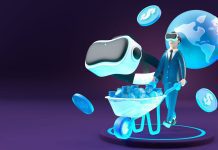According to last week’s released CIO Survey report titled “Seizing Opportunity, The Transition from Legacy to Innovation in Enterprise IT,” big data and mobile devices are key priorities that face CIOs and CTOs as they shift from legacy systems to innovative solutions. Read further for other interestings insights.
Organizations that are able to integrate new technologies into their core businesses can outsmart the competition and have a great impact on bottom-line results. The most important areas and priorities for CIOs are:
- 32% Big Data
- 32% Mobile Devices
- 24% Cloud Computing
- 12% Social Media
The problem I have with this list is for instance social media versus big data. Social media also produces a lot of big data and can be seen as a subset of big data, so do they mean social media technologies?
The demand for better solutions is focussed on:
- business driver for innovation (52%),
- competitive pressures (36%) and
- global markets (12%).
Now the real interesting part is the following results from the survey, the biggest impediments to IT innovation are:
- 32% Skills shortage
- 29% Maintenance of legacy systems
- 25% New efforts with limited clear goals
- 16% Scaling/support of new technology for enterprise
Skills and human capital rank first, then technology. People are key and in a mechanical and technology-centric global business environment people tend to be forgotten, they tend to be seen as part of the mechanical process instead of those that control and direct it.
I think, as elaborated here, the learning organization as construct, as facilitator is the real competitive advantage. Then, no matter what IT issue and challenge there will be, the organization will be able to benefit from it as optimal as possible.
Tim Guleri, Managing Director of Sierra Ventures said:
Sierra’s CIO Advisory Board provided us with so many strategic insights into the challenges that face today’s CIOs that we decided to formalize them into this report. We found that today, CIOs and CTOs have to wear multiple hats such as being strategic while keeping up with ever-changing technology advances and maintaining legacy systems. They have to evaluate risk, be innovative—all while keeping the lights on and the systems up and running. CIOs are changing the way they approach new technologies by sharing and leveraging the risks through strong relationships with VCs and other CIOs in non-competing industries, and we are happy to be partners in this journey.
Gianluigi Cuccureddu is co-founder of Damarque, helping you to improve your commercial performance through better engagement with your employees, customers and strategic business partners.
We offer high-impact training, coaching and consulting services for professionals, teams and organizations to help improve people ánd organizational performance and innovation capability in an efficient and sustainable way.


























